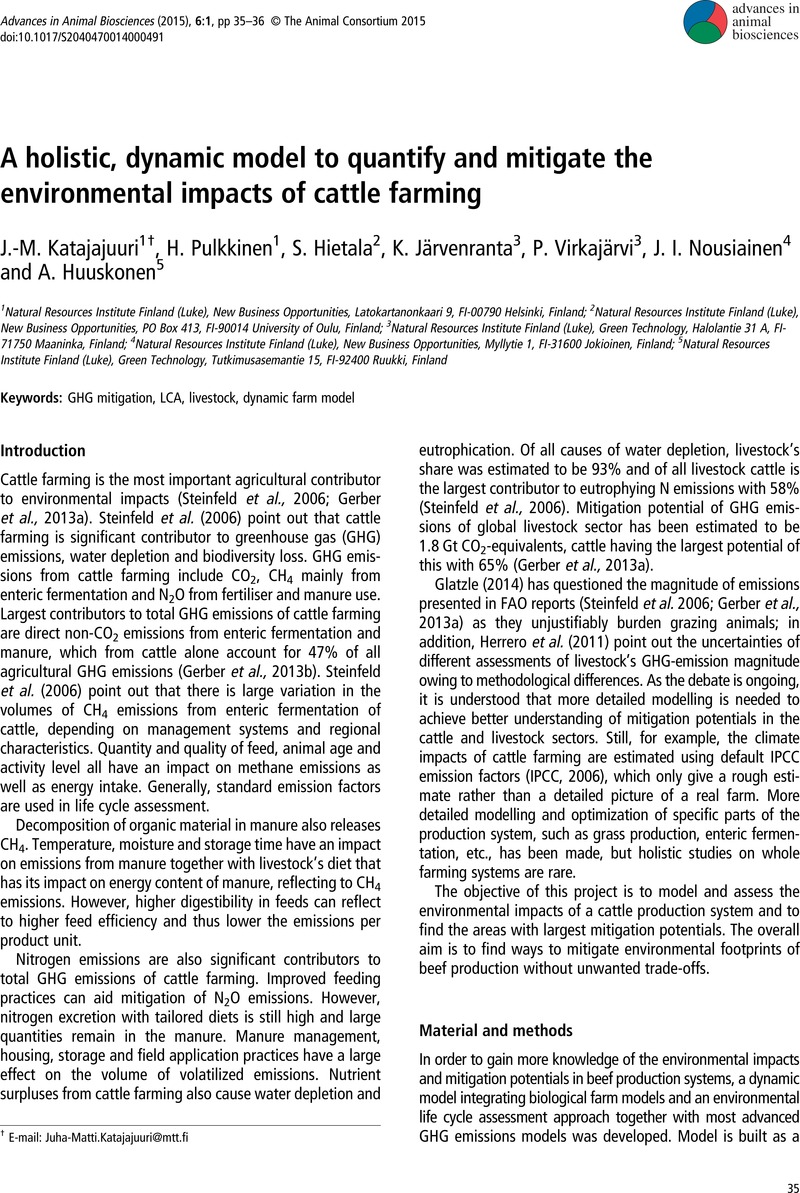No CrossRef data available.
Article contents
A holistic, dynamic model to quantify and mitigate the environmental impacts of cattle farming
Published online by Cambridge University Press: 17 February 2015
Abstract
An abstract is not available for this content so a preview has been provided. Please use the Get access link above for information on how to access this content.

- Type
- Full Paper
- Information
- Copyright
- © The Animal Consortium 2015
References
Gerber, PJ, Steinfeld, H, Henderson, B, Mottet, A, Opio, C, Dijkman, J, Falcucci, A and Tempio, G
2013a. Tackling climate change through livestock: a global assessment of emissions and mitigation opportunities. Food and Agriculture Organization of the United Nations (FAO), Rome, Italy.Google Scholar
Gerber, PJ, Hristov, A, Henderson, B, Makkar, H, Oh, J, Lee, C, Meinen, R, Montes, F, Ott, T and Firkins, J
2013b. Technical options for the mitigation of direct methane and nitrous oxide emissions from livestock: a review. Animal
7 (suppl. 2), 220–234.Google Scholar
Glatzle, A
2014. Questioning key conclusions of FAO publications ‘Livestock’s Long Shadow’ (2006) appearing again in ‘Tackling Climate Change Through Livestock’ (2013). Pastoralism
4, 1–6.Google Scholar
Herrero, M, Gerber, P, Vellinga, T, Garnett, T, Leip, A, Opio, C, Westhoek, H, Thornton, P, Olesen, J and Hutchings, N
2011. Livestock and greenhouse gas emissions: the importance of getting the numbers right. Animal Feed Science and Technology
166, 779–782.Google Scholar
IPCC
2006. Agriculture, Forestry and other Land Use, vol. 4, IPCC Guidelines for National Greenhouse Gas Inventories. IGES, Japan. http://www.ipcc-nggip.iges.or.jp/public/2006gl/index.html
Google Scholar
Ramin, M and Huhtanen, P
2013. Development of equations for predicting methane emissions from ruminants. Journal of Dairy Science
96, 2476–2493.Google Scholar
Regina, K, Kaseva, J and Esala, M
2013. Emissions of nitrous oxide from boreal agricultural mineral soils – statistical models based on measurements. Agriculture, Ecosystems & Environment
164, 131–136.Google Scholar
Steinfeld, H, Gerber, P, Wassenaar, T, Castel, V, Rosales, M and de Haan, C
2006. Livestock’s long shadow. FAO, Rome.Google Scholar




